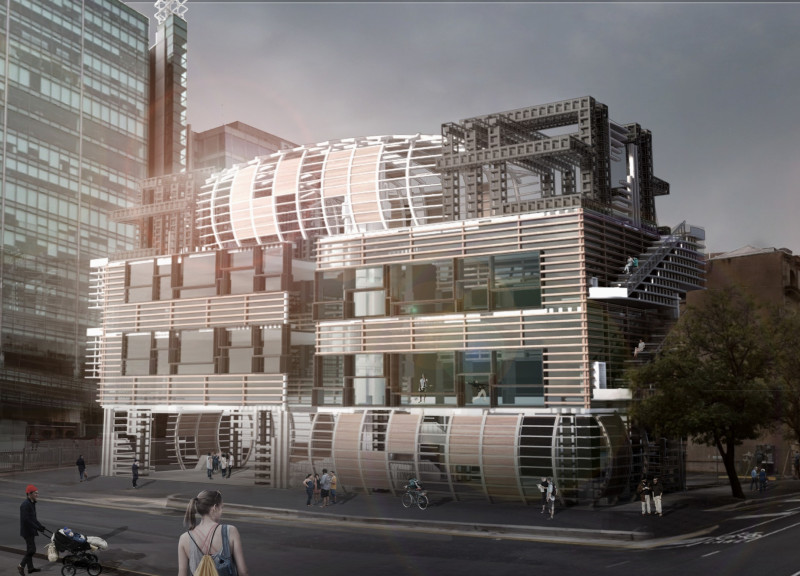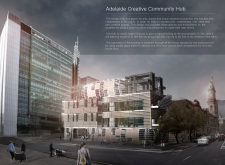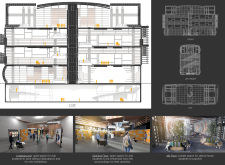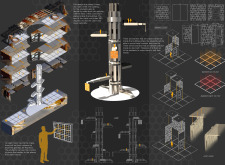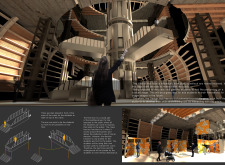5 key facts about this project
### Project Overview
The Adelaide Creative Community Hub is situated in Adelaide, South Australia, and serves as a dedicated space for arts, dance, and music students. The facility is designed to facilitate creative expression, collaboration, and community engagement. This innovative environment provides flexible spaces that adapt to various artistic activities, encouraging interaction among users and fostering a vibrant cultural scene.
### Spatial Configuration and Interaction
The design emphasizes openness, allowing students to rearrange the interior layout to suit their needs. A central crane system enables the reconfiguration of spaces to facilitate different modes of practice and collaboration. The building consists of multiple levels, including a public performance area on the first floor and quieter underground spaces for individualized work. The interaction between these dynamic spaces promotes a shared creative experience among multiple art disciplines and supports both individual and collective artistic endeavors.
### Material and Structural Detailing
A combination of wood, steel, and glass comprises the primary materials used throughout the hub. Wood is selected for its acoustic properties and warmth, contributing to a welcoming atmosphere, while steel and glass elements offer structural integrity and ample natural light. The exposed structural system showcases the building's tectonic qualities and reflects a balance between natural and industrial aesthetics. The integration of these materials not only enhances the design's visual appeal but also aligns with sustainability objectives, creating a setting that is conducive to artistic exploration and community engagement.


